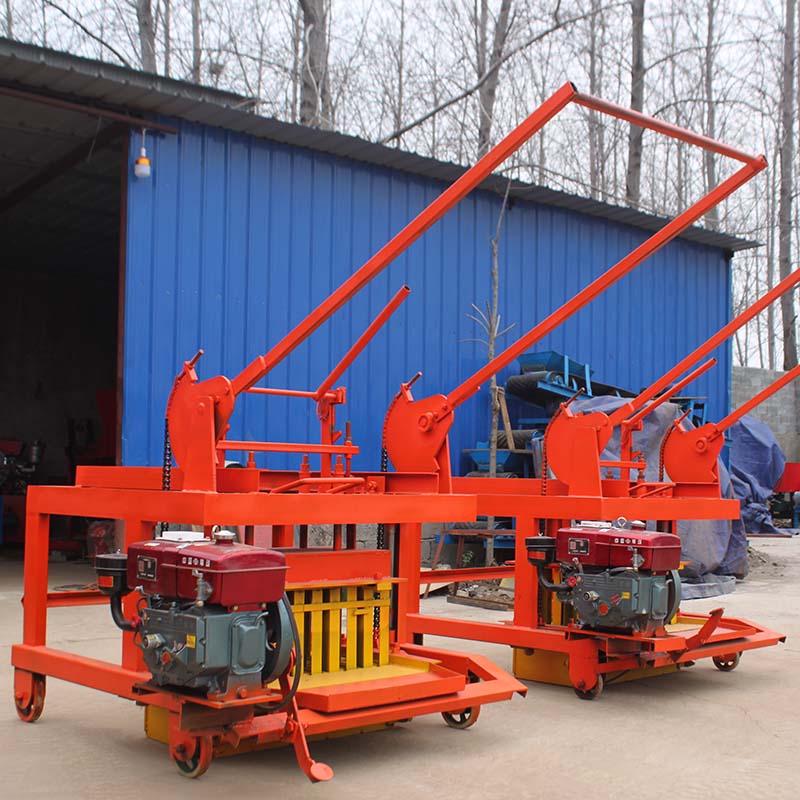image source:Aiwei block machine
Introduction:
Brick making is an essential process in the construction industry, and the choice of brick making machine plays a crucial role in determining efficiency, productivity, and the quality of bricks produced. Two primary types of brick making machines are commonly used: manual and automatic. Each type has its own set of pros and cons. This article aims to compare manual and automatic brick making machines, examining their advantages and disadvantages, to help builders and entrepreneurs make informed decisions about the most suitable option for their specific needs.
Manual Brick Making Machines:
Pros of Manual Brick Making Machines:
Cost-effective: Manual brick making machines are generally more affordable compared to automatic machines. This makes them a viable option for small-scale brick producers or entrepreneurs with limited budgets.
Simplicity of Operation: Manual machines are relatively straightforward to operate. They require minimal technical knowledge and can be easily operated by a small team of workers with basic training.
Versatility: Manual brick making machines offer greater flexibility in terms of brick design and size variations. They can produce different types of bricks, including interlocking bricks and various customized shapes.
Lower Energy Consumption: Manual machines do not rely on electricity or fuel, resulting in lower energy consumption. This makes them suitable for regions with limited access to reliable power supply.
Local Employment Opportunities: Manual brick making machines rely heavily on manual labor, creating job opportunities for individuals in the local community. This can contribute to social and economic development.
Cons of Manual Brick Making Machines:
Limited Production Capacity: Manual machines have lower production capacities compared to automatic machines. They require more time and effort to produce a similar quantity of bricks, which may slow down construction projects.
Labor-Intensive: Manual brick making requires significant physical labor. It can be tiring and time-consuming, leading to higher labor costs and potential health and safety concerns for workers.
Inconsistent Quality: The manual production process may result in variations in brick quality. Inadequate compression, uneven dimensions, and inconsistent density are common challenges associated with manual brick making.
Dependency on Skilled Workers: Achieving consistent quality with manual machines often requires skilled workers with experience in brick making. Finding and retaining skilled workers may pose challenges in some regions.
Automatic Brick Making Machines:
Pros of Automatic Brick Making Machines:
High Production Capacity: Automatic brick making machines can produce a large volume of bricks within a short period. They are designed for efficient, continuous operation, ensuring faster completion of construction projects.
Consistent Quality: Automatic machines offer superior control over the brick production process, resulting in consistent quality bricks. Precise compression, uniform dimensions, and density contribute to the structural integrity of the buildings.
Reduced Labor Requirements: Automatic machines significantly reduce the need for manual labor. They can perform various tasks, such as material feeding, brick molding, and stacking, with minimal human intervention. This reduces labor costs and ensures a safer working environment.
Increased Efficiency: Automatic machines streamline the brick making process, reducing human errors and improving overall efficiency. They can operate continuously without interruptions, maximizing productivity and minimizing downtime.
Technological Advancements: Automatic brick making machines incorporate advanced features such as computerized controls, sensors, and data monitoring systems. These technologies enable real-time monitoring, precise adjustments, and data analysis, optimizing machine performance and enhancing efficiency.
Cons of Automatic Brick Making Machines:
Higher Initial Investment: Automatic brick making machines are more expensive compared to manual machines. The initial investment cost may be a barrier for small-scale entrepreneurs or brick producers with limited financial resources.
Technical Expertise Requirement: Operating and maintaining automatic machines require technical expertise. Skilled operators and maintenance personnel are necessary to ensure optimal performance and address any technical issues that may arise.
Power Supply Dependency: Automatic machines rely on a stable and reliable power supply. In regions with frequent power outages or inadequate infrastructure, power supply challenges may affect the operation and productivity of automatic machines.
Limited Design Flexibility: Automatic machines may have limitations in terms of design flexibility. They are optimized for standard brick sizes and shapes, making customization more challenging compared to manual machines.
Conclusion:
The choice between manual and automatic brick making machines depends on various factors, including budget, production capacity, labor availability, quality requirements, and the specific needs of the construction project. Manual machines offer affordability, versatility, and local employment opportunities but have limitations in terms of production capacity and quality consistency. Automatic machines, on the other hand, provide high production capacity, consistent quality, efficiency, and technological advancements but require a higher initial investment and technical expertise.
Builders and entrepreneurs should carefully assess their requirements and consider the pros and cons of each type of machine before making a decision. In some cases, a combination of manual and automatic machines may be the most suitable approach, optimizing efficiency and cost-effectiveness. Ultimately, the goal is to select a brick making machine that aligns with the specific needs and long-term goals of the construction project, facilitating efficient and high-quality brick production.
